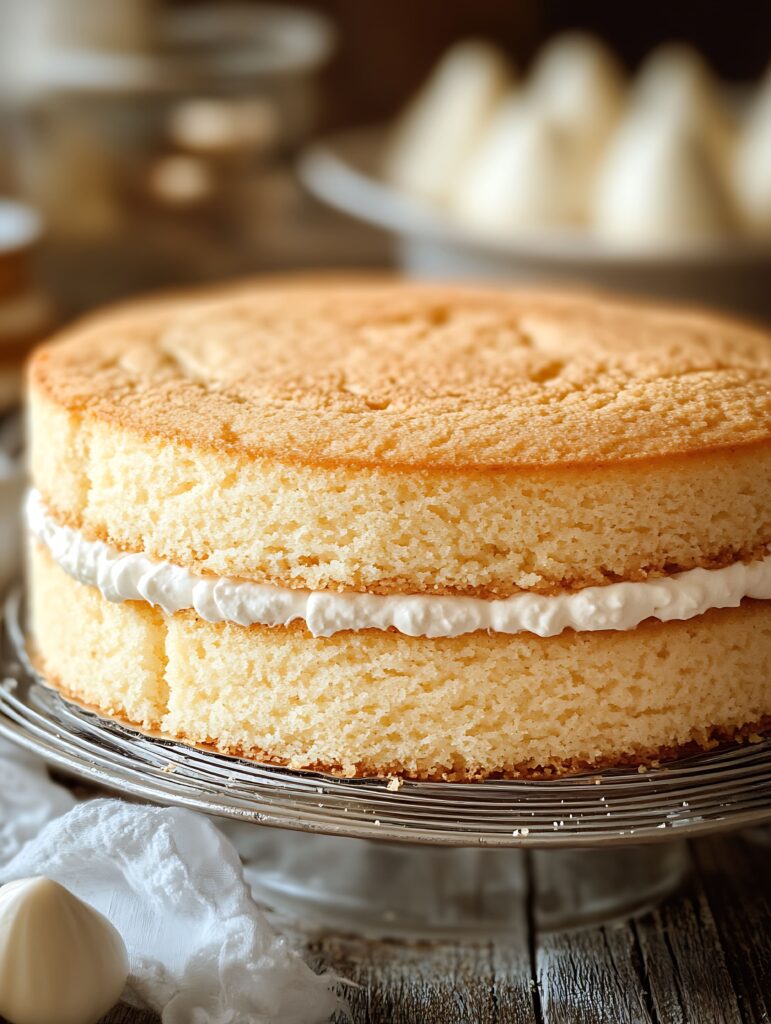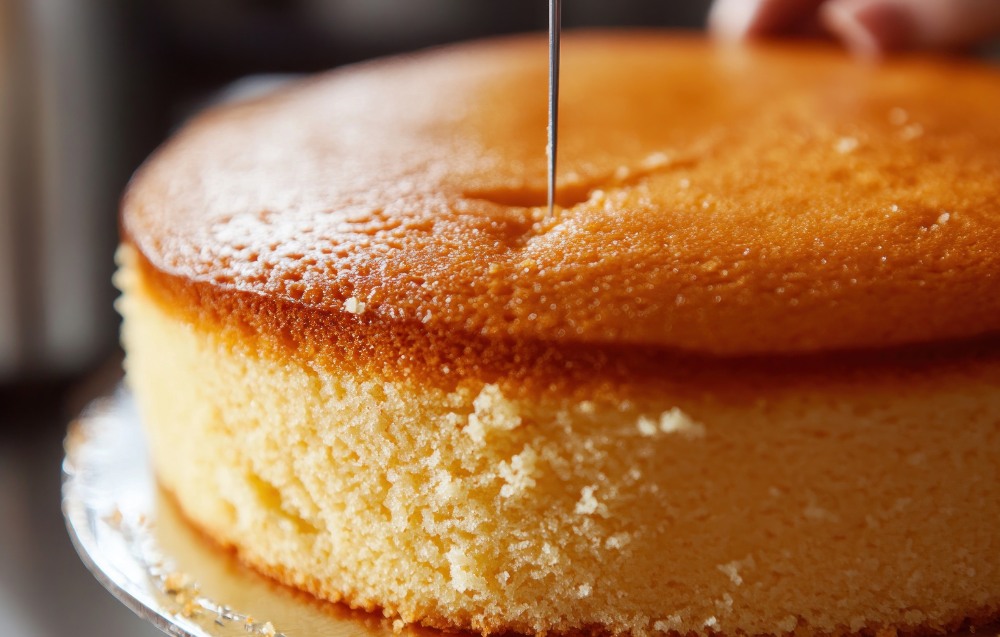Nothing is more heartbreaking than pulling a beautifully baked cake out of the oven only to find a split cake in baking staring back at you, resembling the Grand Canyon. If you’ve faced this issue, don’t worry—you’re not alone. A split cake in baking is a common challenge, but the good news is that it’s completely avoidable with the right knowledge and techniques. In this article, we’ll explore everything you need to know about a split cake in baking, including why it happens, how to prevent it, and the best ways to fix it when it occurs.
What Does a Split Cake Mean in Baking?
Understanding the Issue
So, what exactly is a split cake? Essentially, it refers to a cake that develops deep cracks or splits on the surface during baking. While it might still taste delicious, its appearance may not meet the aesthetic standards you hoped for.
Split cakes typically occur when there’s uneven heat distribution or too much pressure within the batter. The top crust hardens too quickly, and as the interior of the cake expands, it has nowhere to go but up, creating those unsightly cracks.

Learn how to troubleshoot other baking issues with this helpful guide on The Key to Gluten-Free Baking.
“A split cake is like a volcano erupting in your oven—it’s messy, unpredictable, but still salvageable.”
Visual and Structural Effects
A split cake in baking affects more than just its appearance; it can also compromise the texture and structure. Cracks in a split cake in baking often lead to dryness, uneven baking, and challenges when decorating. Frosting or layering becomes difficult, as the uneven surface disrupts the cake’s stability and visual appeal. These issues can turn an otherwise enjoyable baking experience into a frustrating one, especially when striving for a flawless presentation. However, understanding what causes a split cake in baking is the first step toward avoiding it. With the right techniques, bakers can achieve consistently beautiful, split-free results.
Common Causes of Split Cakes
Overmixing or Undermixing the Batter
Mixing the batter is a delicate dance. Overmix it, and you develop too much gluten, making the cake dense and prone to cracking. Undermix it, and you’ll end up with an uneven texture that might lead to structural weak points. Striking the right balance is key.
Discover more about balancing your ingredients and techniques in Banana Split Cake: Your New Favorite Dessert Fix.
Incorrect Oven Temperature
Temperature plays a critical role in baking, and getting it wrong can cause cakes to split. Too high a temperature makes the cake rise too quickly, creating cracks as the batter struggles to keep up with the rapid expansion. Conversely, a low temperature can extend baking time, drying out the outer layers while the center remains undercooked, which may also lead to splitting. Many ovens are surprisingly inaccurate, so it’s essential to double-check yours with an oven thermometer for precise results. Proper temperature control ensures even baking and helps prevent those unsightly cracks from ruining your cake’s appearance and texture.
Using the Wrong Type of Pan
Did you know the type of pan can significantly affect your cake’s outcome? Dark-colored or nonstick pans absorb more heat, causing the batter to bake faster and increasing the risk of cracks on the surface. This rapid baking often leads to uneven cooking and split tops. To counteract this, reduce your oven temperature by 25°F when using these pans. This simple adjustment helps ensure a more even bake and minimizes the chances of splitting. Choosing the right pan and making temperature tweaks can make all the difference in achieving that perfect, smooth cake every time.
Issues with Leavening Agents
Leavening agents like baking soda or baking powder are essential for helping your cake rise, but using too much or too little can spell disaster. Too much leavening causes the cake to rise quickly and then collapse, while too little prevents proper rising, leading to structural imbalances
“Think of leavening agents as the Goldilocks of baking—you need just the right amount to get that perfect rise.”
How to Prevent Split Cakes
Proper Mixing Techniques
Mixing may seem simple, but it’s an art. Use a gentle hand when combining wet and dry ingredients. A good rule of thumb is to mix until everything is just combined—no more, no less. If you’re using a stand mixer, keep it on a low setting to avoid overmixing.
Check out these step-by-step guides for similar baking challenges, like in How to Make a Cookie Cake.
Adjusting Oven Temperature for Even Baking
Your oven’s temperature can make or break your cake (literally!). Always preheat your oven, and place the cake pan in the center to ensure even heat distribution. If you notice your cakes often split, try baking at a slightly lower temperature for a longer period. This gradual heat helps the cake cook evenly, reducing the chance of cracks.
Choosing the Right Equipment
From the pan to the mixer, the tools you use matter. Opt for light-colored aluminum pans for the most even baking results. And when it comes to measuring ingredients, don’t eyeball it—use a kitchen scale for precision. A small investment in proper tools can save you from countless baking headaches.
Tips for Accurate Ingredient Measurement
Baking is a science, and accuracy is non-negotiable. Use measuring cups for dry ingredients and a liquid measuring cup for wet ones. Level off dry ingredients with a knife to avoid adding too much, and always sift flour to ensure there are no lumps or excess density.
Importance of Room Temperature Ingredients
Using room-temperature ingredients might sound fussy, but it’s crucial for even mixing. Cold ingredients don’t combine as well, leading to uneven batter and potential cracks. Let your eggs, butter, and milk sit out for about 30 minutes before you start baking.
“Room temperature ingredients are like teammates who’ve had their coffee—they work better together!”
Solutions for Already Split Cakes
Okay, so your cake didn’t turn out as planned, and now it’s showing off a crack down the middle—a classic split cake in baking. Don’t worry! A split cake in baking isn’t the end of the world. In fact, there are plenty of creative ways to salvage it and even transform it into something spectacular. From quick fixes to decorative hacks, you can still make your split cake in baking a showstopper. Let’s dive into how to repair, repurpose, or decorate that cracked cake like a pro and turn this mishap into a masterpiece!
Repairing the Cake Aesthetically
A cracked top doesn’t mean your cake is doomed. With a few tricks, you can repair it and make it look flawless:
- Trim the Top: Use a serrated knife to level off the cracked portion. A flat surface makes frosting easier.
- Frost Generously: Cover the entire cake with a thick layer of buttercream or ganache to hide imperfections.
- Get Creative: Add decorations like sprinkles, edible flowers, or a fruit glaze to divert attention from any uneven spots.
“Even a cracked cake can steal the show with a bit of frosting magic.”
Explore the chemistry behind cake baking to understand why cracks occur.
Creative Ways to Use Split Cake
(H3)
If fixing isn’t an option, repurposing your cake is a great way to turn a mishap into an opportunity:
- Make Cake Pops: Crumble the cake, mix it with frosting, and roll into bite-sized balls. Dip them in melted chocolate for a quick dessert.
- Create a Trifle: Layer the cake with whipped cream, pudding, and fresh fruit for an easy showstopper.
- Crumble as Topping: Use cake crumbs as a topping for ice cream or yogurt for an unexpected treat.
Get creative with topping ideas inspired by How to Make a Cookie Cake.
Frosting and Decoration Hacks
Split cakes are often best disguised under a thick layer of frosting. If you’re short on time or inspiration, here are a few quick fixes:
- Naked Cake Look: Embrace the imperfection by scraping off excess frosting for a rustic vibe.
- Top-Heavy Designs: Focus your decorations on the top of the cake. Think fresh fruit, edible flowers, or a dusting of powdered sugar.
- Drip Cake: Pour ganache over the edges, letting it drip down naturally for a trendy, professional look.
The Role of Humidity and Altitude in Cake Splitting
Did you know that where you bake can play a huge role in your cake’s success? Humidity and altitude are two external factors that can wreak havoc on your batter if you’re not prepared.
Baking in High-Altitude Conditions
At higher altitudes, the air pressure is lower, which can cause cakes to rise quickly and then collapse. To avoid this:
- Reduce Leavening Agents: Use 25% less baking powder or soda than the recipe calls for.
- Add More Liquid: Increase liquid ingredients slightly to combat dryness.
- Lower the Oven Temperature: Decrease the baking temperature by 15-25°F to allow for even cooking.
“High-altitude baking is like playing chess with the atmosphere—it takes strategy and patience.”
Find out why an oven thermometer is essential for managing temperature adjustments.
Managing Humidity in Your Baking Space
High humidity can cause ingredients like flour to absorb moisture, altering the batter’s consistency. Here’s how to manage it:
- Store Ingredients Properly: Use airtight containers to keep moisture out.
- Control Your Kitchen’s Humidity: If possible, bake in an air-conditioned or dehumidified space.
- Adjust Your Recipe: Add a tablespoon of extra flour if the batter feels too runny.
Suggested External Link:
Master tips for accurate ingredient measurement to ensure success in humid conditions.
Common Baking Mistakes Related to Split Cakes
Even seasoned bakers make mistakes, so don’t beat yourself up if your cake splits. However, avoiding these common pitfalls can save you a lot of heartache in the future.
Overloading the Batter with Ingredients
Adding too many extras like nuts, chocolate chips, or fruit can make your cake top-heavy and prone to splitting. If you want to include mix-ins, gently fold them into the batter just before pouring it into the pan, and avoid overloading the batter.
Ignoring Recipe Instructions
Let’s be honest—how often do you skim a recipe and think, “I got this”? Baking is chemistry, and skipping steps or making substitutions without understanding their impact can lead to disaster. Always read the recipe thoroughly before you start, and follow it to the letter.
“A recipe is like a map—if you skip a turn, you’ll end up lost in the kitchen wilderness.”
Baking Science: Why Cakes Split
Understanding the science behind cake splitting is like pulling back the curtain on a baking mystery. Every ingredient, process, and environmental factor contributes to the final outcome, and when one element is off, the cake may split. Let’s explore the chemistry and physics at play.
Heat Distribution and Cake Structure
When your cake bakes, the heat causes the batter to rise and set. Ideally, this happens uniformly. However, uneven heat distribution can lead to the dreaded split top. If the edges bake faster than the center, the crust hardens while the interior is still expanding. The result? Cracks and splits.
- Why it Happens: Heat rises unevenly in older ovens or when pans are placed too close to the heat source.
- How to Fix It: Always position your cake in the center of the oven and rotate the pan halfway through baking to ensure even heat.
Chemical Reactions in Baking
Baking is essentially a series of chemical reactions. Leavening agents like baking soda and powder create gas bubbles that make the cake rise. When these reactions are too rapid or unbalanced, the batter expands unevenly, causing splits.
“Think of your cake batter as a balloon—if it inflates too quickly, it’s bound to burst.”
The solution? Measure your leavening agents precisely. A pinch too much can make all the difference.
Popular Myths About Cake Splitting
The world of baking is full of myths, some helpful and others downright misleading. Let’s debunk a few common ones related to split cakes.
Cooling Cakes Upside Down
Myth: Cooling a cake upside down prevents cracks.
Fact: While this method works wonders for certain cakes (like angel food), it’s not a fix-all solution. Cooling a cake upside down can actually cause it to collapse if it’s too soft or not fully baked. Instead, let your cake cool on a wire rack in its pan for about 10 minutes before removing it.
Adding Extra Flour for Firmness
Myth: Adding more flour makes a cake sturdier and less likely to crack.
Fact: Too much flour can lead to a dense, dry cake that’s even more prone to splitting. Stick to the recipe and ensure you measure your flour correctly—use the “spoon and level” method to avoid packing in too much.
“Flour isn’t the duct tape of baking—more isn’t always better.”
FAQs on Split Cakes
You’ve got questions about split cakes, and we’ve got answers. Here are some of the most frequently asked questions to help you become a cake-baking pro.
Can Split Cakes Be Salvaged?
Absolutely! A split cake may not win any beauty contests, but it can still taste amazing. Whether you trim, frost, or repurpose it into another dessert, a split cake is rarely a total loss.
What Is the Best Way to Prevent Cracks?
Prevention starts with preparation. Follow the recipe to the letter, use the right tools, and monitor your oven temperature. Don’t forget to keep your batter evenly mixed and avoid overloading it with extras like nuts or fruit.
Are Split Cakes Safe to Eat?
Yes, split cakes are perfectly safe to eat as long as they’ve been baked thoroughly. The cracks are merely a cosmetic issue and don’t affect the cake’s flavor or safety.
Conclusion: Mastering the Art of Flawless Baking
Cake splitting in baking can be a frustrating challenge, but it’s one that every baker—novice or experienced—encounters at some point. The good news? By understanding the causes, applying preventive techniques, and embracing a bit of creativity, you can significantly reduce the chances of a split cake in baking and even find clever ways to make the best of it.
Remember, baking is not just about perfect recipes but also about learning from your mistakes. So, when a split cake in baking happens, consider it a badge of honor—a step toward becoming a more skilled and resourceful baker. After all, every crack tells a story, and every baker has their tricks.
“A cracked cake doesn’t mean failure; it’s just a delicious opportunity to try something new.”

